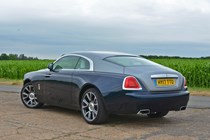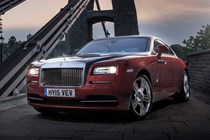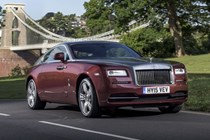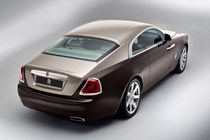
Rolls-Royce Wraith Coupe (2013-2023) engines, drive and performance
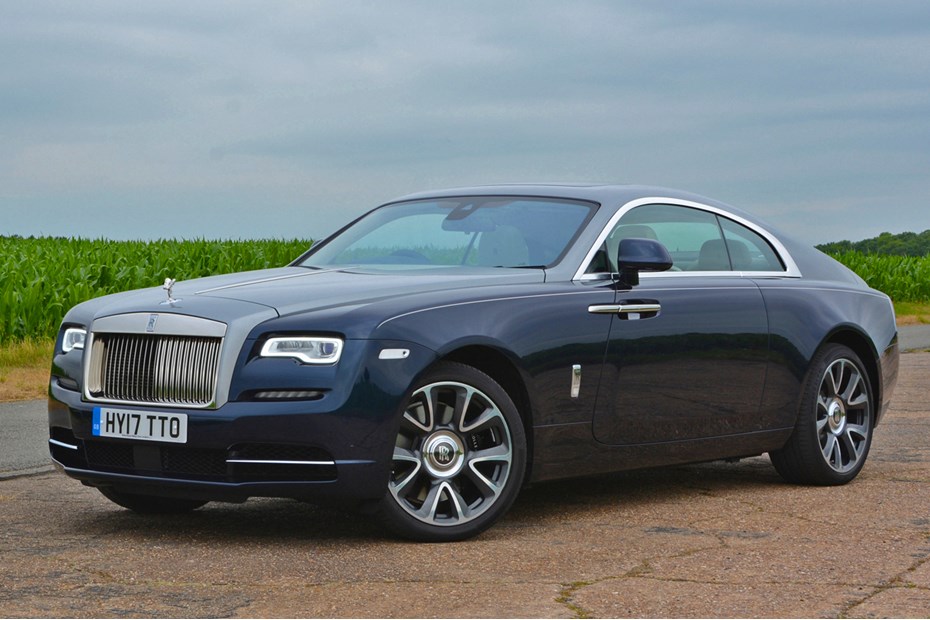
- Impressively quiet V12 engine
- Relentless, linear performance
- Eye-watering thirst for fuel
Such an opulent motor car requires an engine of substantial displacement to deliver the requisite performance, hence the 6.6-litre motor providing the Rolls-Royce Wraith’s propulsion.
Given Rolls-Royce’s access to BMW’s technology pool, it’s not beyond the realms of fantasy for such speed to be delivered in even more hushed tones with either a hybrid or fully-electric drivetrain.
But that misses the point: Rolls-Royce customers will pay a significant premium for the engineering excellence required for a brawny internal combustion engine that rarely boasts about its performance.
One V12 engine, two states of tune
Whispering away under the Wraith’s vast bonnet is a V12-engine with a 6,592cc capacity. That in itself sounds substantial enough to shift this gargantuan grand tourer, but just to be sure twin turbochargers are also present.
The result is a rudely lustful 632hp at the heady heights of 5,600rpm, with a rich seam of 820Nm of torque available from 1,500rpm all the way through to 5,500rpm.
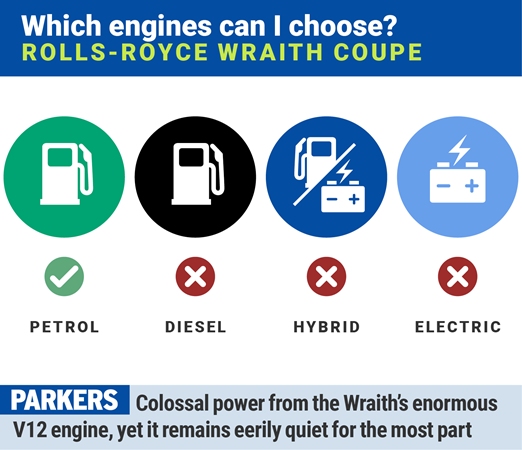
This combination allows the Wraith to be driven gently without ever feeling as though you’re a minute right-foot movement away from bulleting horizonwards, aided by an appropriately relaxed throttle response.
But when you do press with greater surety, the Wraith doesn’t disappoint: 0-62mph takes just 4.6 seconds, with the top speed electronically limited to 155mph.
Targeting a younger, edgier client-base is the Wraith Black Badge, which is unchanged in power terms, but has been re-mapped to eke out an extra 50Nm of torque.
While it remains a flexible engine, that peak torque band is narrower, now running from 1,700-4,500rpm, encouraging the driver to drive it a smidgen more aggressively. Only when you do does the V12 become more vocal – enticingly so.
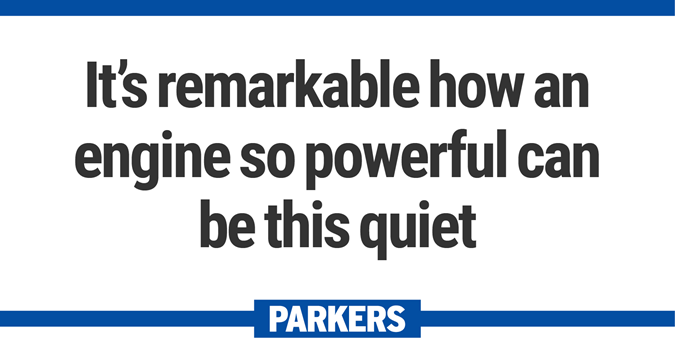
Like the traditional Wraith, the Black Badge features an eight-speed automatic gearbox – without anything so workmanlike as a manual override – but in the latter the settings have been altered encouraging it to change-up at higher engine speeds.
Top speed is also unchanged, but the torque increase sees the 0-62mph benchmark fractionally shaved to 4.5 seconds.
Needless to say such mechanical muscularity has a substantial thirst for super unleaded petrol: if you manage more than 20mpg in the real-world, you’re clearly not trying hard enough.
- Incredibly light controls for a sporty car
- Yet for its size it’s surprisingly agile
- Rolls hasn’t ditched its comfort focus
‘Rolls-Royce’ and ‘sports cars’ look uncomfortably incongruous sat so closely in a sentence, and it’s a metaphor for the Wraith itself: it is, without doubt, a Rolls above and beyond anything else.
In essence this means you are imperiously detached from the outside world, not just in terms of the sheer compliance of the air suspension arrangement, but also via the enormous steering wheel.
Save for the double-R logo at its centre, the thin-rimmed wheel wouldn’t look significantly out of place in a Routemaster bus, but its broad diameter means that even less effort is required to heave this behemoth around corners.
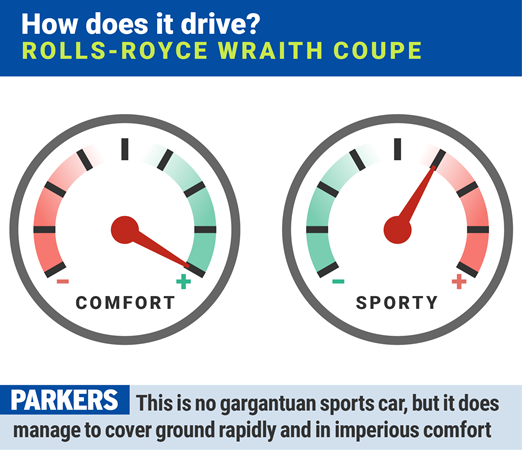
It is – like the air suspension – a poor conduit between the driver and the road surface, albeit telegraphing slightly more information about what’s going on beneath the tyres than the anaesthetised sensation observed in the Ghost saloon.
Opt for the Black Badge and the sensations are enhanced slightly, with a weightier feel to the steering and a mildly increased firmness to the suspension.
Detached driving sensation
You have to learn to trust the car’s behaviour and traction to make it go around bends quickly and confidently. And when you do, it feels all the more remarkable how neatly it will trace the meandering B-road you’re travelling on.
Occasionally you’ll feel the rear end twitching when it’s been fed too much torque, but the electronics soon dampen the fires of high jinx. You can turn off the stability software for a wild and unseemly experience, but again that’s to miss the point of the Wraith.
Electronically-controlled air suspension performs well to negate much of the Wraith’s body roll, but you’re still very conscious of its weight transferring this way and that during quick directional changes.

It’s less successful at dialling out the prow dipping down during harder braking, but it never feels unsafe. The brakes themselves are admirable for displaying little sign of being less than exceptionally effective even when called upon repeatedly over a short period of time.
Better then to drive the Wraith respectfully to enjoy its comforting qualities in full. A little exuberance doesn’t go amiss from time to time, but don’t forget it’s more rewarding to usher rather than hustle it along.



